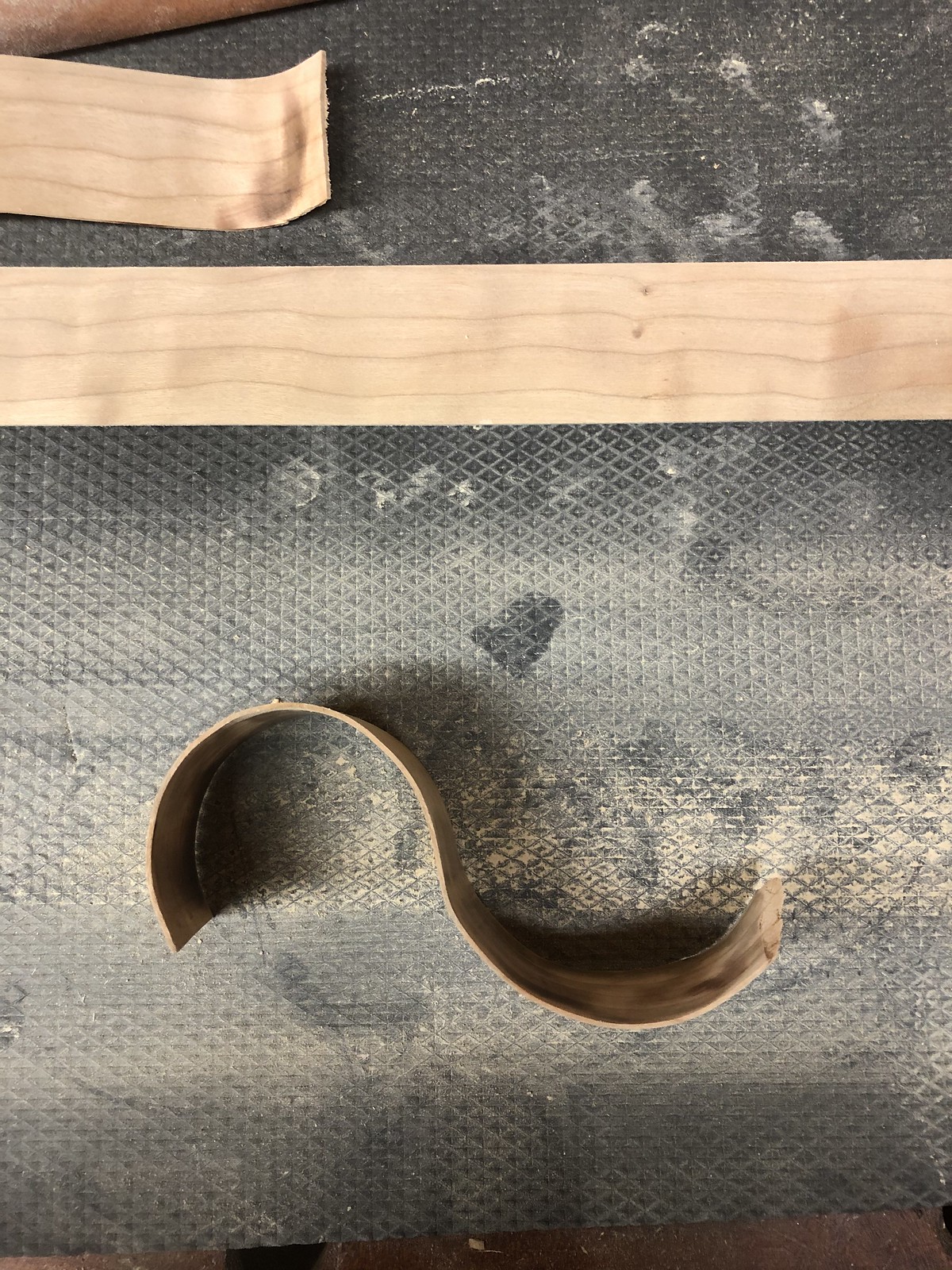Greetings from Montana. I am building my first mandolin - an F5. I'm not a complete novice but it feels that way. I built a baritone ukulele last year that turned out pretty good according to those that play it. I don't play any instrument.
I have been bending rim pieces over the last couple of weeks. Its highly-figured cherry, and it has been breaking and scorching pretty easily. I've had to sand it down to 0.050-.052, and it still breaks BUT I finally got the three pieces bent and in the form. My problem is that there are some minor flat spots in/near the tight bends at the scroll and on the s-piece that I'd like to smooth out, but I'm reluctant to keep messing with them. I only have one relatively long piece left that I can use but its not long enough to replace all three pieces. Should I be concerned about these small flat spots? Will they be obvious once the top and back are on? How would one attempt to smooth out these areas if they might be obvious? Or, given my bending experiences to date, should I just leave them be?
Thanks in advance for any advice.
Gary Davis






 Reply With Quote
Reply With Quote




Bookmarks